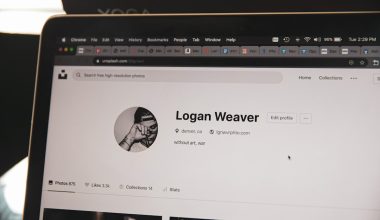In today’s increasingly competitive marketplace, traditional sales pitches often fall short when trying to capture the attention of decision-makers. Instead of leading with internal capabilities or generic solutions, the most successful pitches are those that respond to genuine customer signals. This is the essence of the Market-Led Proposal Playbook—a strategic approach that shifts the lens from “What can we offer?” to “What does the customer need right now, and how are they signaling it?”
By aligning proposals with clear market and customer indicators, organizations not only stand out but often see shorter sales cycles, higher win rates, and deeper, longer-lasting client relationships. This article explores how to harness customer signals effectively and build compelling, targeted pitches that convert opportunities into wins.
The Shift From Product-Led to Market-Led Proposals
For years, many proposals started with product features, internal case studies, and visionary positioning. However, clients today are overloaded with one-size-fits-all approaches that lack direct relevance to their current challenges. A market-led proposal flips this model completely.
It starts by identifying customer behavior and intent signals—public statements, organizational changes, buying sentiment, or digital bread crumbs that point to emerging needs. These indicators form the foundation upon which a personalized, highly relevant proposal is built.
Understanding Customer Signals
Customer signals are the cues or feedback that indicate a company’s immediate or upcoming needs. These can be both explicit (a job posting for a new CMO) and implicit (increased engagement with your platform via digital channels). Here are some of the types professionals should track:
- Business Announcements: Mergers, acquisitions, funding, leadership changes.
- Social Media Activity: Posts about pain points, industry concerns, or relevant hashtags.
- Job Listings: Hiring for roles that suggest organizational change or tech upgrades.
- Content Engagement: Who’s reading your whitepapers, emails, interacting with ads.
- Technographic Shifts: Changes in the stack from analytics tools or cloud platforms.
Once identified, these signals act as real-time evidence of interest and need, providing your team with a strategic entry point.
From Signal to Solution: The Playbook Process
The Market-Led Proposal Playbook operates through a structured yet adaptable framework. This helps sales and marketing teams consistently identify, interpret, and act on customer signals to develop timely and tailored pitches.
1. Detect and Prioritize Signals
Teams must be equipped to monitor a range of sources for relevant customer signals. Tools like buying intent platforms, LinkedIn Sales Navigator, or Google Alerts can help monitor both company and market movements.
Prioritize signals that suggest high-value decisions or changes, such as:
- New funding rounds or executive hires
- Announced digital transformation efforts
- Shifts in marketing language or public strategy

2. Translate Signals Into Needs
Understanding a customer signal is one thing—translating it into an actionable need is another. Ask yourself:
- What problem does this signal hint at?
- What urgency lies behind this shift?
- What type of solution would likely fit their roadmap or timeline?
For example, if a company has just hired a VP of Digital Innovation, the pitch should revolve around accelerating innovation outcomes or supporting onboarding with tech infrastructure—it should not focus on generic platform capabilities.
3. Align Solutions With Impact
This step involves crafting a proposal that directly speaks to the need uncovered. The key here is relevance and timeliness. The proposal should be framed as a response to the specific challenge or change, not a repurposed sales deck.
Each proposal should include:
- Signal Reference: Mention the discovery and context
- Tailored Solution: Speak to their goals, roles, timeline, and transformation scale
- Impact Metrics: Showcase outcomes, not features
Role of Cross-Functional Collaboration
Crafting market-led proposals requires more than just the sales team—it demands coordination between marketing, product, customer success, and data teams. Each function contributes to painting a cohesive picture of the customer and their direction:
- Marketing can provide engagement insights and content consumption patterns.
- Product teams can map use cases to real customer goals based on roadmap correlation.
- Customer success can offer testimonials or data from similar industries or roles.

Case Study Example: From Signal to Sale
Consider this scenario: A technology firm that monitors enterprise IT changes notices a spike in job listings for Software Engineers with cybersecurity experience at a Fortune 500 company. A few weeks later, the CTO is featured in a podcast discussing legacy system vulnerabilities enabling compliance risk.
Using these signals:
- The sales team prepares a pitch highlighting integration with common legacy systems, use in finance and compliance risk management, and fast implementation timelines.
- The proposal anchors its value not on the product specs, but on how it anticipates and solves the compliance gap tied to employee recruitment trends and stated leadership concerns.
- The result is a fast-tracked RFP inclusion, a demo with the core security team, and a signed pilot within nine weeks.
This example shows how market-awareness and timing transform a standard outbound effort into a precise, opportunity-capturing pitch.
Developing a Winning Mindset
Ultimately, a market-led approach requires a cultural shift toward deep curiosity and client obsession. Organizations that excel here embed customer intelligence into every aspect of their go-to-market motion—from account planning to proposal design to post-sale expansion strategy.
This means training revenue teams to recognize signals, press deeper, and brainstorm solutions rooted in real-world customer priorities. Winning today is less about capability demonstration and more about timing, relevance, and framing the problem better than the client themselves.
Frequently Asked Questions
What is a customer signal?
A customer signal is a behavior or action that indicates a possible buying intent or business need. It could be a public announcement, a job posting, a leadership comment in media, or even digital engagement with your brand.
How is a market-led proposal different from a traditional pitch?
A market-led proposal is built in direct response to external customer signals and is tailored to match real-time priorities. Traditional pitches tend to be product- or capability-focused, often lacking this level of relevance or timing.
What tools can help identify customer signals?
Common tools include LinkedIn Sales Navigator, Bombora, 6sense, Google Alerts, job boards, and internal CRM engagement analytics to help track both structured and unstructured customer changes.
Can small teams implement this approach?
Yes. Even small teams can adopt a signal-based approach by defining a repeatable framework, staying close to priority accounts, and using simple tools like newsletters, alerts, and collaboration with allies in marketing or customer success.
How quickly should a team act on a customer signal?
Timeliness is key. In most cases, the first 7–14 days after a signal is detected offers the best opportunity to stand out. The faster a team moves with a signal-aligned proposal, the more relevant and strategic it feels to the customer.




